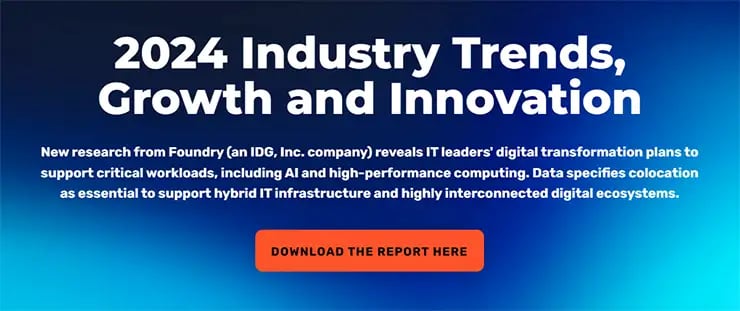
Rent vs. Buy: If Cloud Were a House, Which Would You Choose?
Ask any financial advisor about the best long-term investment vehicle, and it's almost certain that real estate will be one of the top answers. Unlike renting, in which your hard-earned dollars go toward paying for someone else's debts, investing in real estate has myriad benefits, including generating wealth through appreciation, building equity, and hedging against inflation.
But beyond the mere financial benefits, homeownership also imparts a sense of security and certainty. As a renter, your dwelling is fleeting, temporary. Having a place to stay and store your stuff is primarily subject to someone else's whims and priorities. By contrast, as a property owner, you know you and your belongings have a place to call your own for however long you wish to stay.
Incredibly, what has historically been a conundrum only for private individuals is now a critical decision among business leaders. The massive migration toward digital businesses — leveraging cloud technologies to improve efficiency, scale and agility — has business and IT execs rethinking their real estate strategies.
An estimated 70% of businesses have digital transformation plans in place for the coming years. And while business and IT execs aren’t necessarily worrying about furniture or the size of the backyard, they do need to decide whether their core assets — namely data, storage, computer hardware, and other essential infrastructure — are going to live in space rented from someone else or in a home of their own.
Perpetual renter with an all-public cloud approach
Research suggests that over 80% of all enterprise workloads will be run in the cloud as early as next year, with more than 40% of that traffic run in a public cloud. Organizations looking to get a jumpstart on their digital transformation efforts may opt for an all-public cloud approach, taking advantage of the widespread availability and relatively easy "move-in" public cloud options offer.
Like a furnished rental property, public clouds come fitted out with features like extensible storage, built-in security, and all the essential infrastructure an organization needs to operate a digital business. Set up is easy, move-in is effortless, and the cloud operator — the property owner — is responsible for maintaining it all.
But the stress-free rental lifestyle also has several drawbacks. As a tenant of a public cloud, you're subject to unexpected rate hikes, additional expenses for moving more data in, and no control over the performance and reliability of the technology. And like a rental property, it's also possible that the landlord sells the property or goes out of business altogether — potentially leaving your business operations adrift and in dire need of a relocation.
Life in an all-public cloud environment is flexible and can feel untethered and free. But it's also temporary, fleeting and uncertain from year to year.
Hybrid is home
If an all-public cloud strategy is like renting and owning your data center is like owning a home, then a hybrid cloud strategy is like an ideal mix of both. Fundamentally, a hybrid cloud strategy combines private cloud — on-premises or colocated in a data center — and public cloud services, with orchestration between the two to allow data and applications to be shared.
As a private cloud owner, you're responsible for purchasing the real estate — often dedicated space in a data center or on-site facility — along with the utilities and hardware required to make it habitable. But while your financial responsibilities as a "homeowner" are higher than as a renter, your benefits are also more significant.
Specifically, a hybrid strategy gives you greater control, data protection and performance across applications and platforms. You own the infrastructure, benefit from more predictable and repeatable costs, and have the long-term certainty of not being under the thumb of any single provider or vendor.
The private cloud becomes your main home, housing mission-critical applications, data, and the hardware that supports it all. And when you need more space because your accumulated "stuff" no longer fits, public cloud providers act as a garage or monthly-rental storage unit. They provide on-demand capacity when you need it, but never as the primary location for your most essential belongings.
A time and a place for your time and place
Like renting an apartment or house, there are instances where a temporary situation makes sense. All-public cloud deployments are convenient starting points for small and mid-size enterprises at the beginning of their digital transformation journey.
Bypassing the purchase and configuration of infrastructure, the month-to-month payment flexibility, and the agility of instant scale are all advantageous to growing organizations with limited financial and human resources, but who have acknowledged and adopted a cloud-first business strategy. And it helps level the playing field for those companies who have accepted and embraced a cloud-enabled business model, helping them to compete in the Digital Age and remain relevant in the eyes of their existing and prospective customers.
Still, sustained business success requires a longer-term view. Just as your financial advisor might recommend a plan for you to save up to buy a home while also investing in your retirement accounts, your IT leaders — and your vendor partners — should likewise recommend a plan for you to purchase your own cloud home and invest in the resources and people you'll need to remain competitive, profitable and relevant into your business's golden years.
Contact CoreSite today to learn more about how our hyper-connected data centers enable hybrid cloud strategies for sustainable growth and continued business success.








